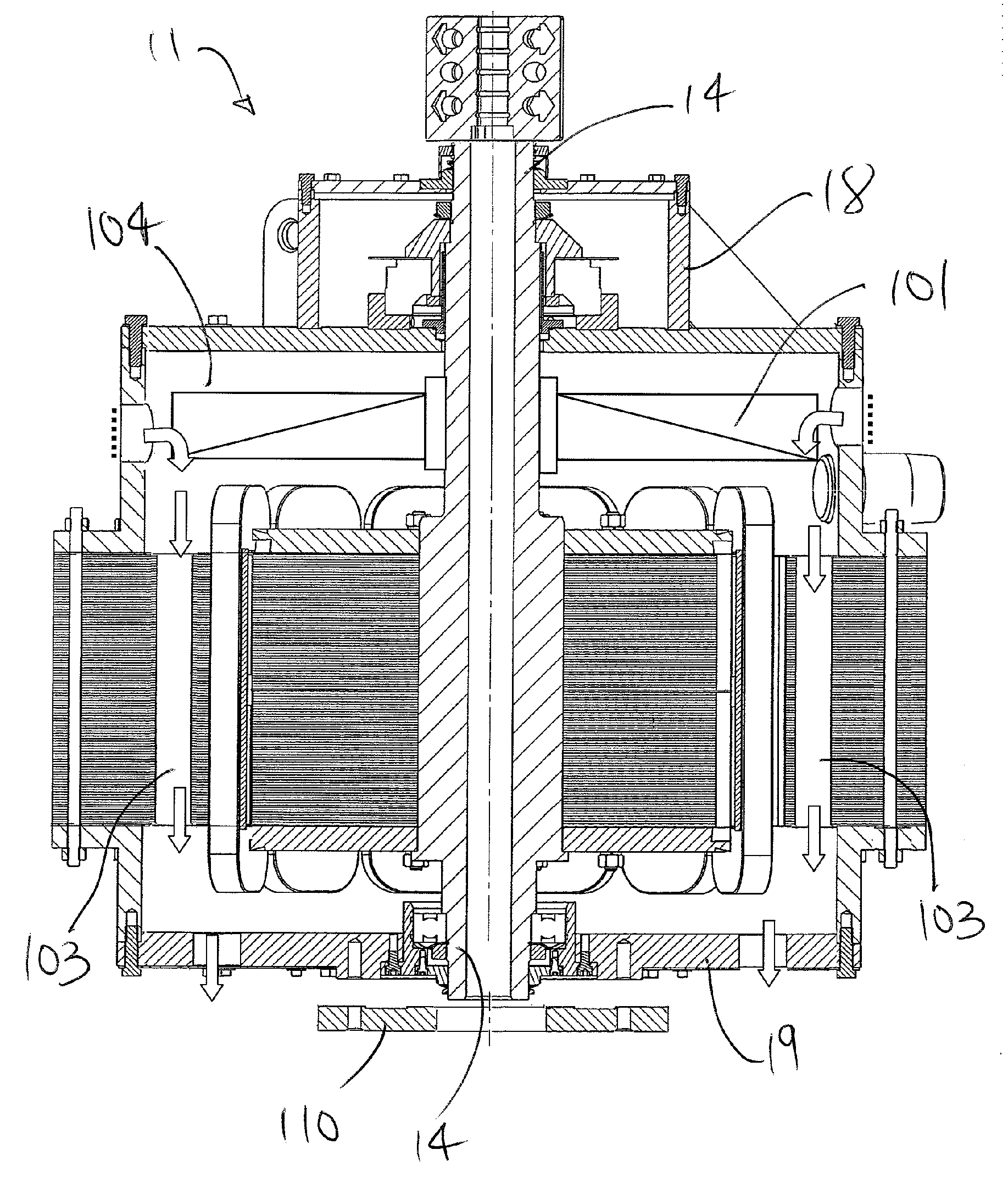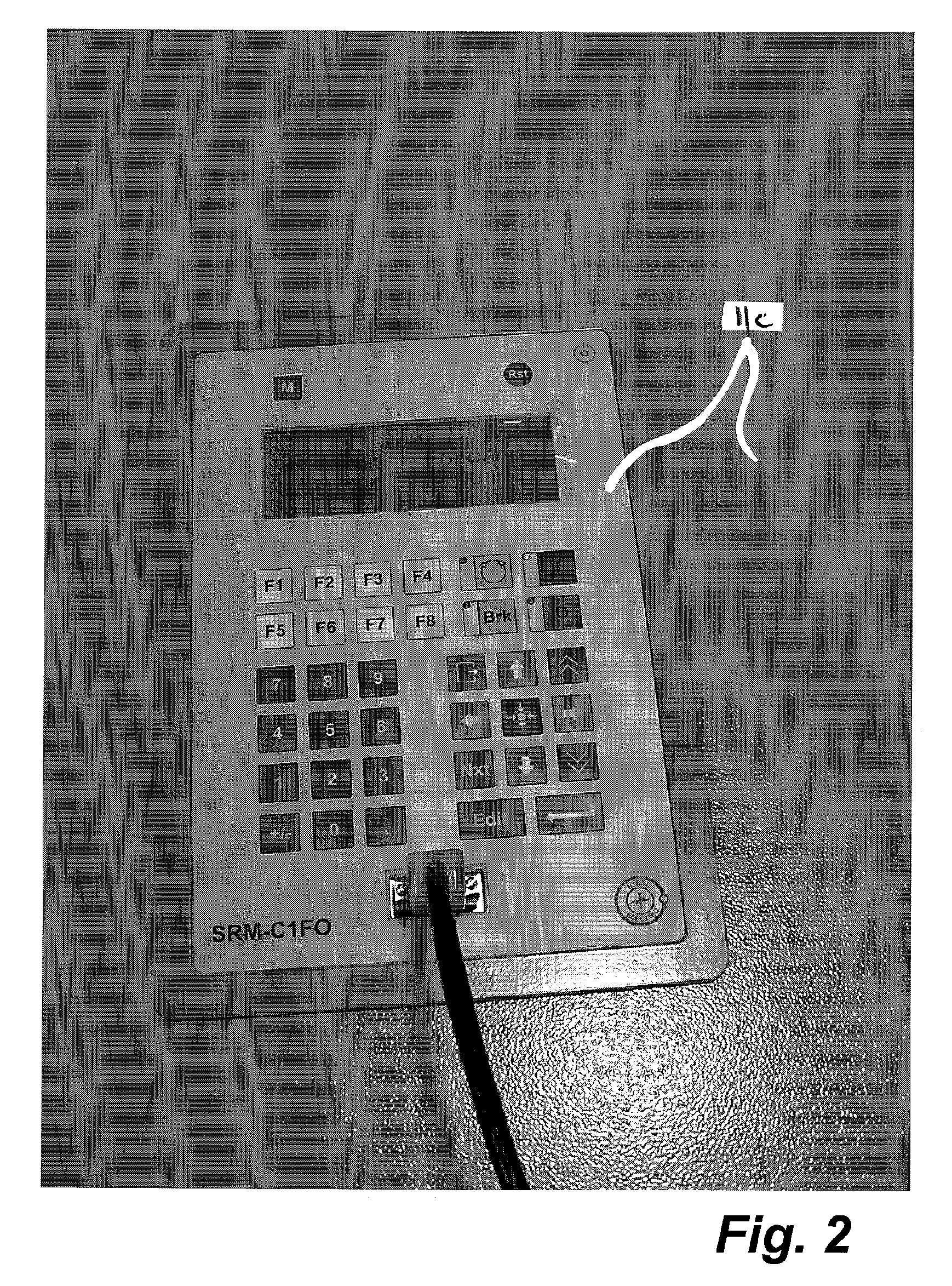Frameless switched reluctance motor and application as a top drive for a rotary pump
a rotary pump and switch-reluctance technology, which is applied in the direction of piston pumps, magnetic circuit shapes/forms/construction, borehole/well accessories, etc., can solve the problems of dangerous damage to the top drive and motor, the case is not adequately served with the prior art top drive, and the low rotational speed is not currently practiced. , to achieve the effect of reliable operation
- Summary
- Abstract
- Description
- Claims
- Application Information
AI Technical Summary
Benefits of technology
Problems solved by technology
Method used
Image
Examples
embodiment a
Cooling Embodiment A
[0083] Induced heat, which can build up and cause premature failure of conventional SRM technology under such rigorous operating conditions, is effectively dissipated under another embodiment of the improved top drive 1. In this preferred embodiment, ambient air is circulated from outside the SRM 11, into the motor and across the stator 12 and rotor 13.
[0084] With reference to FIG. 6-24, the flow path of the cooling air is through cooling air passages formed through a combination of unique stator and rotor design features.
[0085] Simplistically, air is conducted through passages in the stator 12 or laminate stack to remove heat generated by the motor. The air can be directed axially through the stator or radially therethrough.
[0086] In one embodiment, the air is directed upwardly through spaces between adjacent coils wound on adjacent stator poles and through an array of axially-extending passages formed in the rotor 13. With reference to FIGS. 11 and 12, the s...
embodiment b
Cooling Embodiment B
[0090] While the stator 12 may be constructed of low-loss or loss-less material to minimize heat generation, excessive heat may yet result. In this embodiment, a combination of low-loss electrical steel, a modified cross-section for the stator having cooling passages, and forced-cooling is implemented.
[0091] With reference to FIGS. 25 and 26, a stator for the SRM can optionally comprise a laminate stack of rectangular electrical steel. Preferably, heating due to energy loss in the magnetization cycles is minimized through the use of non-oriented, high silica electrical steels such as 0.014 inch gauge ASTM 36F155 / AISI 29 M19. The nominal properties of M19 electrical steel includes a maximum core loss Pc of 1.74 W / 1b and resistivity of 45-55 mW cm. This is contrast to conventional motors having 0.025 inch gauge ASTM 64F275 / AISI 24 M25 electrical steel having a maximum core loss Pc of 2.75 W / 1b and resistivity of 20-30 mW cm.
[0092] As shown in FIG. 25 the stator 1...
PUM
 Login to View More
Login to View More Abstract
Description
Claims
Application Information
 Login to View More
Login to View More - R&D
- Intellectual Property
- Life Sciences
- Materials
- Tech Scout
- Unparalleled Data Quality
- Higher Quality Content
- 60% Fewer Hallucinations
Browse by: Latest US Patents, China's latest patents, Technical Efficacy Thesaurus, Application Domain, Technology Topic, Popular Technical Reports.
© 2025 PatSnap. All rights reserved.Legal|Privacy policy|Modern Slavery Act Transparency Statement|Sitemap|About US| Contact US: help@patsnap.com



